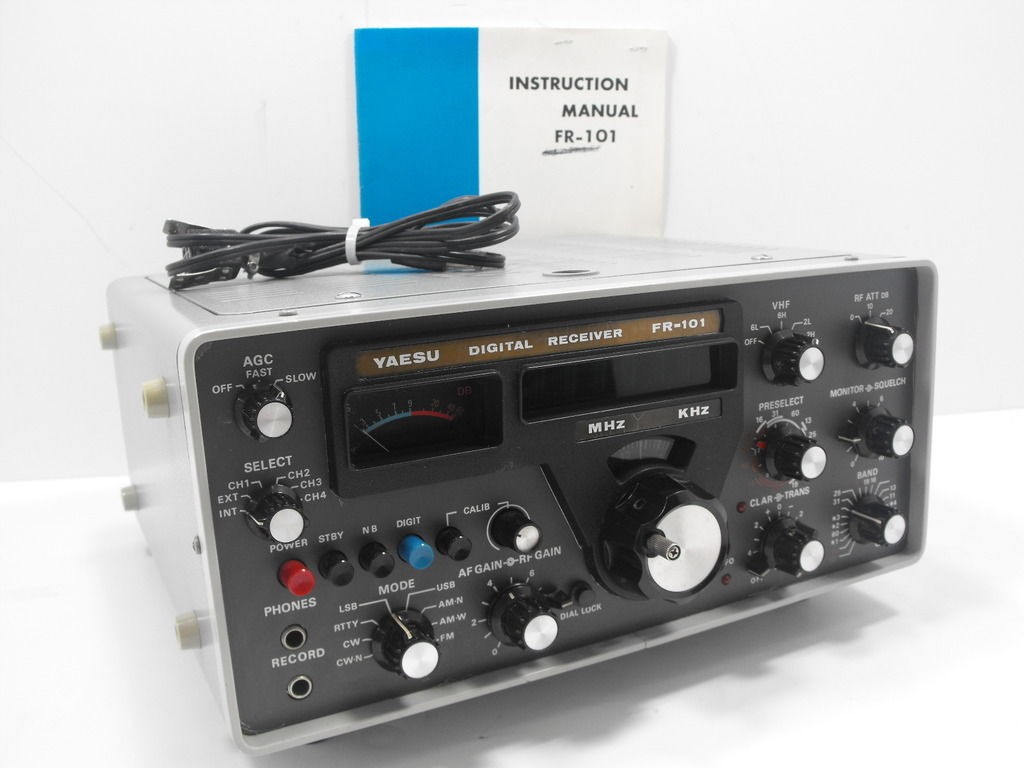Many thanks to SWLing Post reader, Jon, who writes:
“Just noticed this very clean Yaesu FR-101 this morning on eBay. When I first saw the FR-101 in the search results, I thought it was the more popular FT-101 series transceiver. Not sure where the price will go on this one, but I would sure snatch it up if I found it at a hamfest!”
Many thanks, Jon. I was not aware that the FR-101 had a general coverage receiver; the seller lists the frequency range as “1.8 – 29.9 MHz continuous.”


The caption in the ad is misleading. It’s not continuous tuning.
It tunes in 500KHz segments, a crystal needed for each segment. A converter stage converts each band down to the tuneable IF, which then converts to the fixed IF in the HF range, where there are crystal filters.
A search suggests it may have come with some non-ham segments, but that’s not clear. It seems to come with the full two MHz for ten meters, that wasn’t always standard, but given the ability to have built in VHF converters, you tend to need the full 28 – 30MHz.
But the webpages talk about 21 segments, which seems to include the ham bands. So like similar receivers of the era, you can get more coverage by adding crystals, but it will be expensive if you go for the full 30 MHz, and you won’t have enough switch positions. From the picture I can’t count the switch positions.
This was common. Unless you bought a 51J4 or R390, that style of receiver would come with a limited number of segments. Some might have switch positions for all bands, but that wasn’t common. You’d generally choose segments if you had a Radio Shack SX-190, or Drake SPR-4, or similar receiver. Sixty crystals was prohibitive, even back when they were much cheaper.
The fixed tuning segment type receivers were better, better tuning and dial readout, and better image rejection, though at the cost of an extra conversion.
But the crystals needed were the problem. Which is why that early Racal receiver had a Wadley loop, the National HRO-500 had an early synthesizer, to get the needed signal every 500KHz. The Barlow-Wadley xcr-30 portable was a big breakthrough,
51J3type tuning in a portable.
In the early seventies, better synthesizers came along, so Drake sold a synthesizer that put out a signal with the needed 500KHz spacing to make the SPR-4 a continuous tuning receiver, or someone had an article in Ham Radio magazine to build your own.
Then about 1980 it was all over, the Sony 2001 arrived, a synthesizer with 5KHz or so steps to convert the signal up to a higher IF, then down to a lower frequency for selectivity. But one synthesizer did the tuning, no need for crystals or synthesizer, and an analog oscillator.
Michael